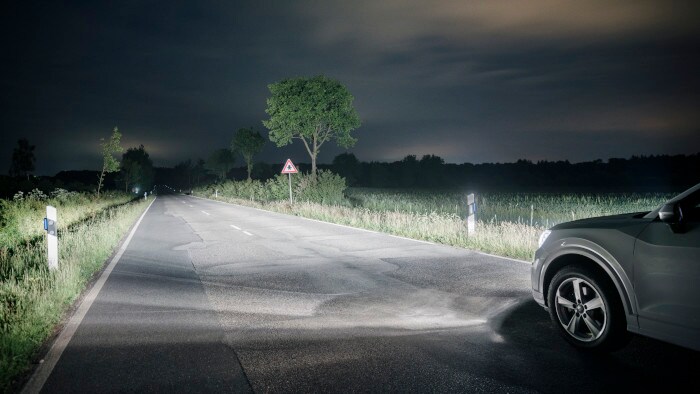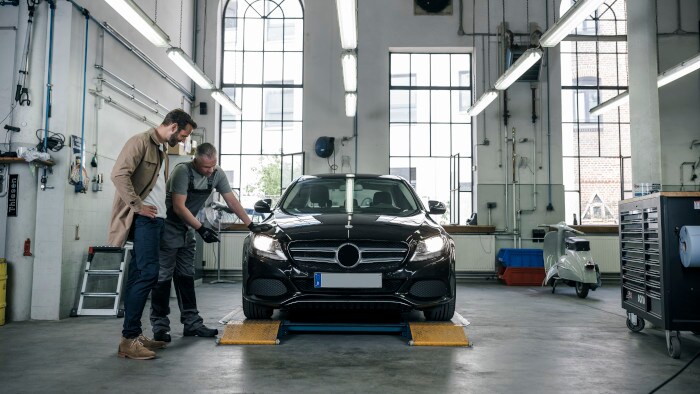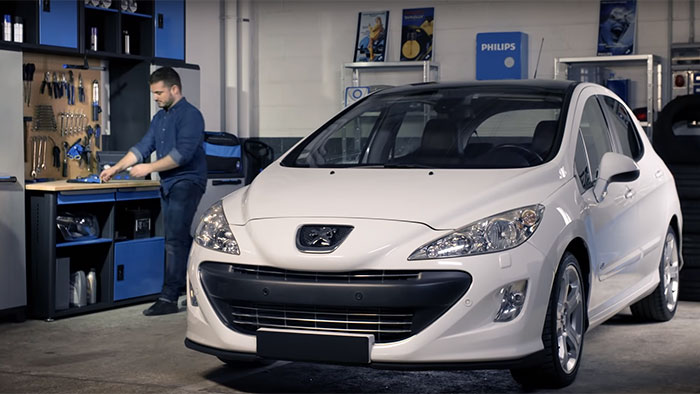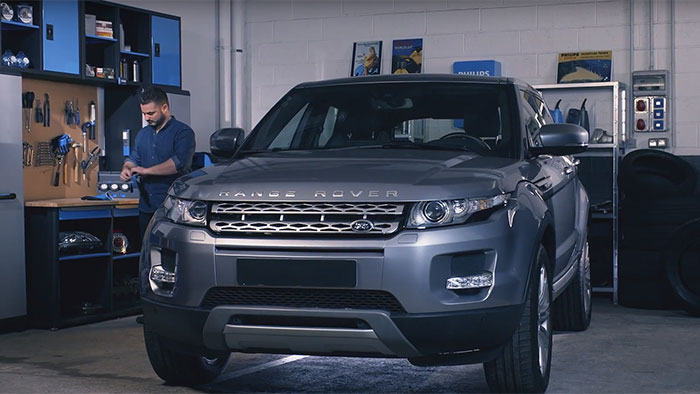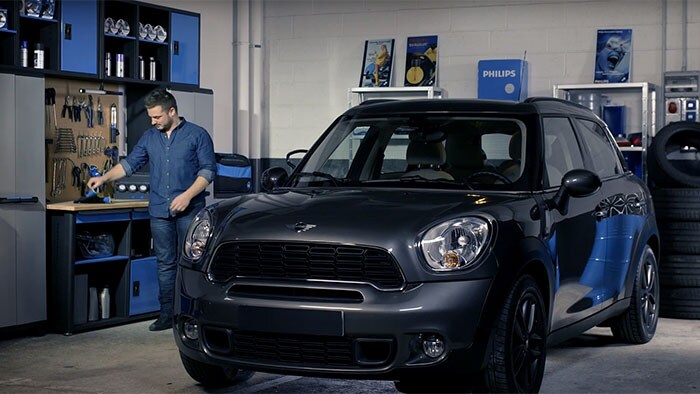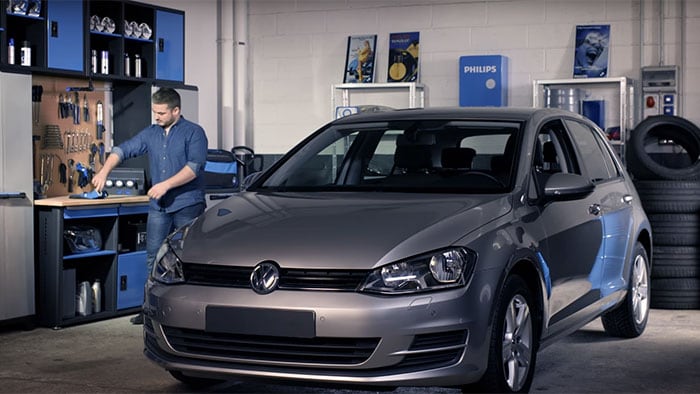Testing our Philips products to the highest specifications to ensure quality and safety to all road users
Philips automotive lighting solutions are synonymous with quality – that is not by chance. Our products go through one of the most rigorous testing and quality assurance regimes in the world. The irreproachable quality you expect from a major OEM supplier We're a major supplier to Original Equipment Manufacturers (OEM), supplying most car makers with automotive bulbs, used for various applications – including head lighting, interior and signaling. We have the design, engineering and manufacturing expertise to deliver any technical type required by car makers, including for cars, motorcycles and the 24V applications required by heavy vehicles. Our full portfolio includes market leading products in halogen, xenon and LED technologies. And with specialized production facilities all over the world we are close to our customers. Our plants deliver hundreds of different types of bulb and LED chips to cover every automotive lighting need. When it comes to quality, we set the standard. OEM suppliers are required to adhere to regulations around the world. We not only ensure compliance with these regulations, our internal quality standards exceed the strictest international standards. In terms of product quality and safety, that means we go above and beyond what is demanded of us. To achieve the highest quality bulbs, we have an ethos of “manufacturing excellence from A to Z”. That means at every step of the production, packaging and delivery process, we’ve implemented rigorous quality control. We closely monitor the quality of materials used, the final products and the actions taken by our employers and suppliers. From the start of production to the moment a bulb is taken out of its packaging by a customer, we demand the very highest standards. The result? A bulb that has no faults, is not damaged in transit, and consistently delivers the exceptional performance our customers expect. Leaving nothing to chance when it comes to road safety But manufacturing excellence is not just about quality products that our customers can buy with confidence – it’s about road safety. Road safety is the primary consideration with manufacturing and testing decisions. And safety matters to our customers, which is why they like to buy quality bulbs they can trust. Based on the very strict quality requirements from the automotive industry, car bulbs are technically precise products. They are subject to close monitoring, starting from the first production step until delivery to the customer. Philips xenon and halogen bulbs are produced for both OEM and the aftermarket. Therefore, they wear the “Original Equipment Quality” seal. That means the aftermarket bulbs hanging on the store shelf are from the very same production line as the bulbs fitted into a new car. Here are some examples of how we ensure quality: 1. Quality control during production: Philips halogen H7 quartz-glass bulbs During production, every individual semi-finished part is carefully tested before it is transferred to the next step. For example, each halogen filament is carefully assessed before being sent to the next step in the process, the production of the halogen burner. Before the bulb is completed, it will have run through 52 different measurements and tests (34 for the filament and burner production, and 18 for the finishing and final quality control). These tests include measurements of geometric, electric and pressure parameters, as well as checks for mechanical strength, controls with automated vision systems, and functional tests. Last but not least, the bulb goes through a final manual and visual inspection. At every step in quality control testing, if the bulb is not fully compliant with our industry leading manufacturing standards, it will be removed from the production line. That is how we ensure every final bulb is flawless and works as intended. 2. Randomized batch sampling before shipment to customers Before bulbs are packed and shipped to customers, each individual batch – that is, bulbs produced in a single shift – will only be released if a random sample of its bulbs passes further rigorous testing. So every batch is subject to the testing of a random selection of its bulbs. Each batch sample is tested on photometry and geometry to ensure compliance with ECE regulations, as well as our even stricter internal specifications. Only if all tests are passed successfully, for all sample bulbs randomly pulled from the batch, will that batch be cleared to leave the factory. 3. Continuous quality monitoring As well as rigorous production controls, and randomized batch sampling, a further sample of bulbs is taken from a batch to undergo life-time testing. This is to check that bulbs are successfully achieving their specified lifetime. For instance, halogen car bulbs are tested at a voltage of 13.2 V, with a continuous switching cycle of 11 hours and 45 minutes ON and 15 minutes OFF. Furthermore, two times a year, up to 40 bulb samples pass through a complete internal test process. This includes photometry, geometry, lifetime, shock and vibration, climatic and salt spray tests, and several others tests unique to Lumileds bulb production specifications. Ensuring no materials are harmful to humans It’s also important that the materials used for our bulbs and packaging are harmless to people, so we closely monitor this, too. Our component suppliers must declare and confirm that they don’t use raw materials included on the REACH Restricted Substances List (RSL)1 . REACH is a regulation of the European Union, designed to improve the protection of human health and the environment from the risks that can be posed by chemicals. It also promotes alternative methods for the hazard assessment of substances, in order to reduce the number of tests on animals2. Protective packaging that does the job There is little point in creating world-class production facilities and intense quality control processes, only for bulbs to be broken during transit or storage. It is vitally important, therefore, that product packaging is able to protect delicate bulbs. For the aftermarket, we create unique packaging designs that protect bulbs so they can be safely transported and stored without being damaged. And then we test this packaging in a range of ways to ensure our products always arrive in perfect condition for our customers. When it comes to new packaging structure, we use several levels of sampling to ensure the highest standards of our products. For example, we work on the paper materials using a cutter plotter for a small batch. The goal here is to confirm the dimensions of the final packaging and that all the pieces fit together perfectly. Once the plotter prototype is approved, we can order customized cutter tools for mass production and perform long test runs on our packing machines. All packaging is also subjected to specific tests in two key areas: product protection and packaging functionality. 1. Product protection The key question is: does the packaging protect the product? To ensure it does, we conduct a range of drop, vibration and transportation tests to be 100% sure there won’t be any damage to the bulbs, whatever the conditions might be during transit or storage. We also conduct inviolately tests to make sure our packaging cannot be opened and closed again. 2. Packaging functionality We can’t control the conditions in which our products will be stored or transported. So we conduct heat and humidity tests on the packaging to ensure it can withstand a wide range of conditions. We also test the sealing, to see how well the packaging lasts over long periods of time. And finally, we test the durability of the hanging hole on the package, so our customers won’t experience issues with broken hooks when hanging the products in their stores. We conduct some of these tests locally with our equipment, but we also cooperate with the Technical University, in Lodz, Poland. We even run tests at the printer, too. The printing house must follow the Color Reference Card (CRC) document we created specifically for our packaging. Every production batch must be in line with the strictest tolerances we set. For each new batch we also check and approve printing results directly on site at the printers. The goal is to ensure our customers receive packaging with consistent colors and quality, printed to the same exacting standards, year after year.
[1] Regulation (EC) No 1907/2006 of the European Parliament and of the Council of 18 December 2006 concerning the Registration, Evaluation, Authorization and Restriction of Chemicals (REACH).
2 REACH, European Chemical Agency - https://echa.europa.eu/regulations/reach/understanding-reach
You might also be interested in:
-
![Bright connections]()
Bright connections
Click here to learn more -
Good bulbs, bad bulbs
Click here to learn more -
![Improve your lights]()
Improve your lights
Click here to learn more -
![Change bulbs in pairs]()
Change bulbs in pairs
Click here to learn more
Find the right bulb for your car
Guide to finding the right bulb
Discover more

Where to buy
Purchase Philips Automotive products online or at a store near you
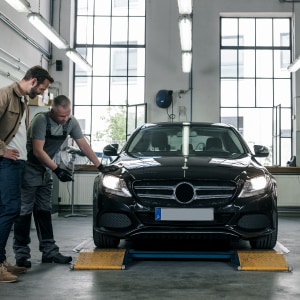
Automotive support
Do you need a replacement Philips headlights for your car?
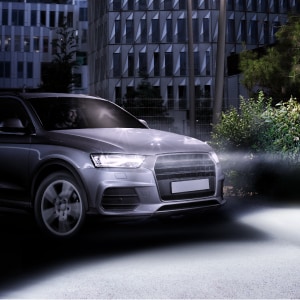
Philips product authenticity
Philips highest priority to provide maximum satisfaction for customers who buy genuine Philips products
How to replace your headlights?
How to replace headlight bulbs on your Peugeot 308
How to replace headlight bulbs on your Range Rover Evoque
How to replace Mini Cooper Countryman headlight bulbs
How to replace headlight bulbs on your Volkswagen Golf VII

